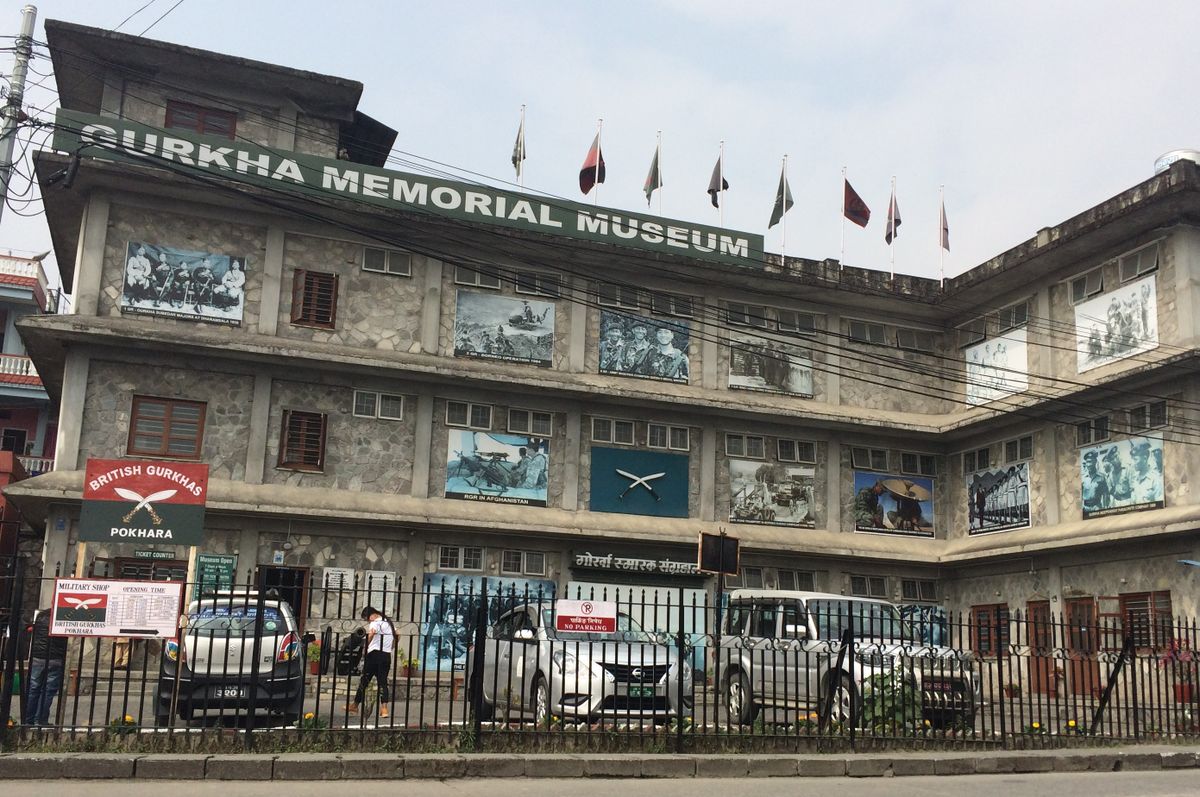About
Fighting under the code that “it is better to die than be a coward,” the world-famous Gurkha soldiers first came to prominence during the Anglo-Nepalese War of 1814-1816. This museum first opened in 2005 and celebrates the international achievements of this elite force through two centuries of paintings, photographs, and artifacts.
The 1st King George’s Own Gurkha Rifles was the inaugural Gurkha regiment formed by the British in 1815 from defectors of the Anglo-Nepalese War (although they actually served under the authority of the East India Company). They have served in nearly every British campaign since. The Gurkhas officially became members of the British Indian Army during the Sepoy Rebellion in 1857, and since then have campaigned in Afghanistan, Russia, China, Malaysia, Burma, among many others in addition to serving with distinction in both world wars.
The Anglo-Nepalese War also introduced the world to the now-iconic Khukuri knife (commonly called the Gurkha knife), many of which are on display in the museum. Its unique design with a distinctively curved blade makes it an efficient slashing weapon. It is, however, mostly used as a utility knife, and in addition to being standard British issue, it can be used effectively to cook.
Another iconic symbol of the Gurkha troops is the Queen’s Truncheon, a copy of which is prominently exhibited. The six-foot-tall bronze and silver truncheon was a gift from Queen Victoria following meritorious service during the Sepoy Rebellion, and is carried on parade by the Truncheon Jemadar. As additional recognition, Queen Victoria appointed two Gurkha officers to attend the monarch at every official event, a tradition that continues to this day.
The museum is appropriately located in Pokhara, where every recruit begins his journey. Each year, more than 6,000 young men try out for the Gurkhas, but only 400 are chosen. The most grueling test is the infamous “Doko race” during which candidates must run 3 miles (5 kilometers) at high altitude up the Himalayan foothills carrying 55 pounds of rocks on their backs in under 45 minutes. Compared to the initiation trials, Gurkhas usually find basic training in the British Army a breeze.
The might and courage exhibited by these world-class soldiers once prompted Field Marshal Sam Manekshaw to remark that “if a man says he is not afraid of dying, he is either lying or is a Gurkha.”
Related Tags
Know Before You Go
The museum's hours are 8 a.m.-4:30 p.m.
Published
May 8, 2020

















































